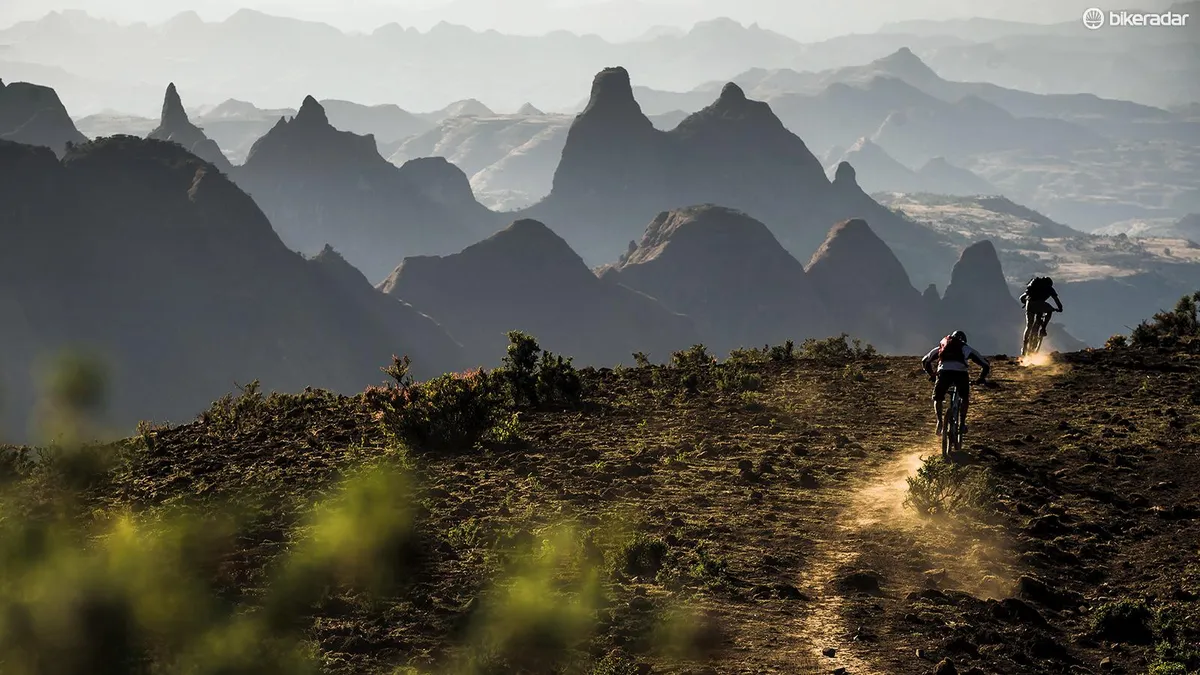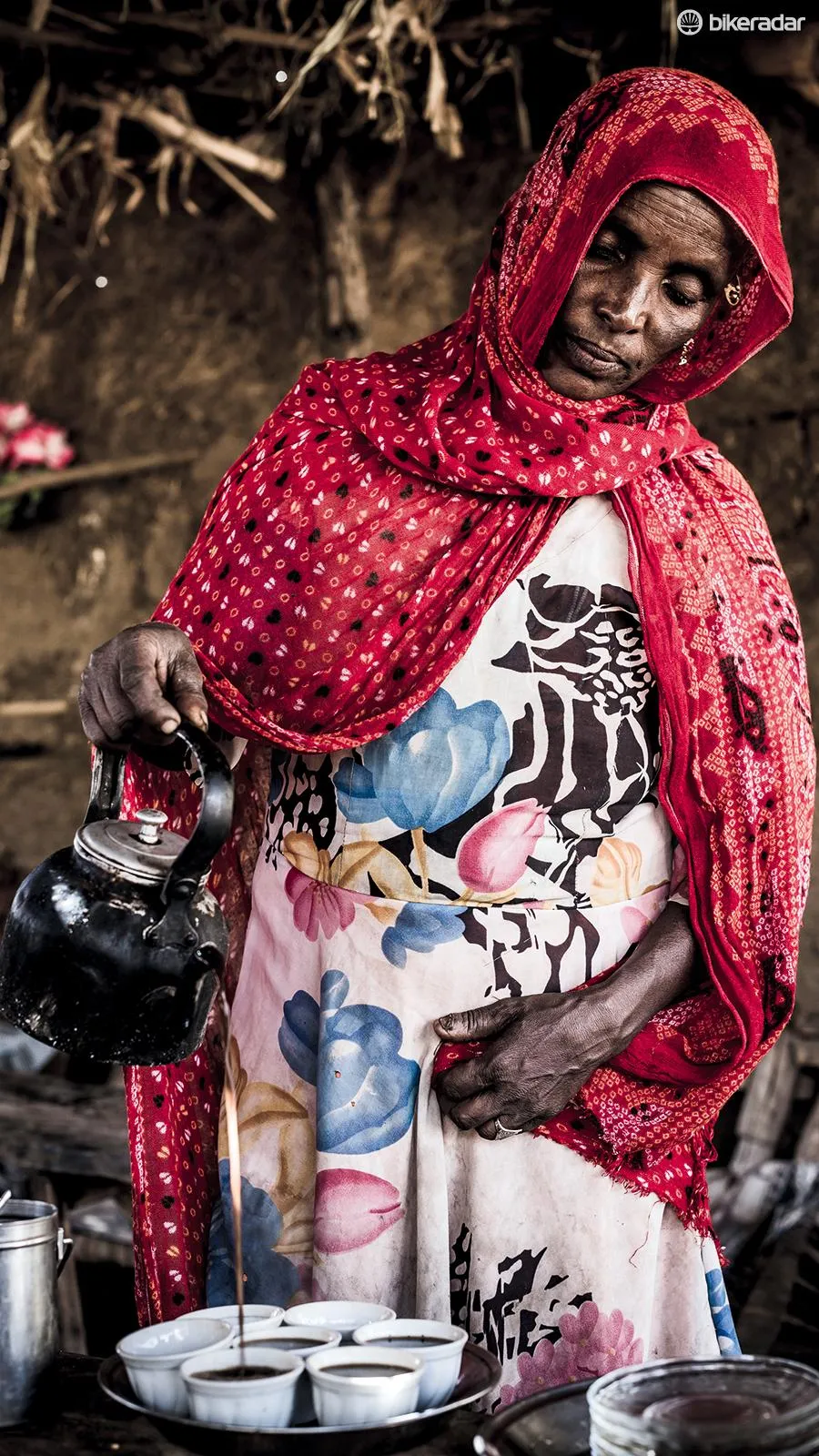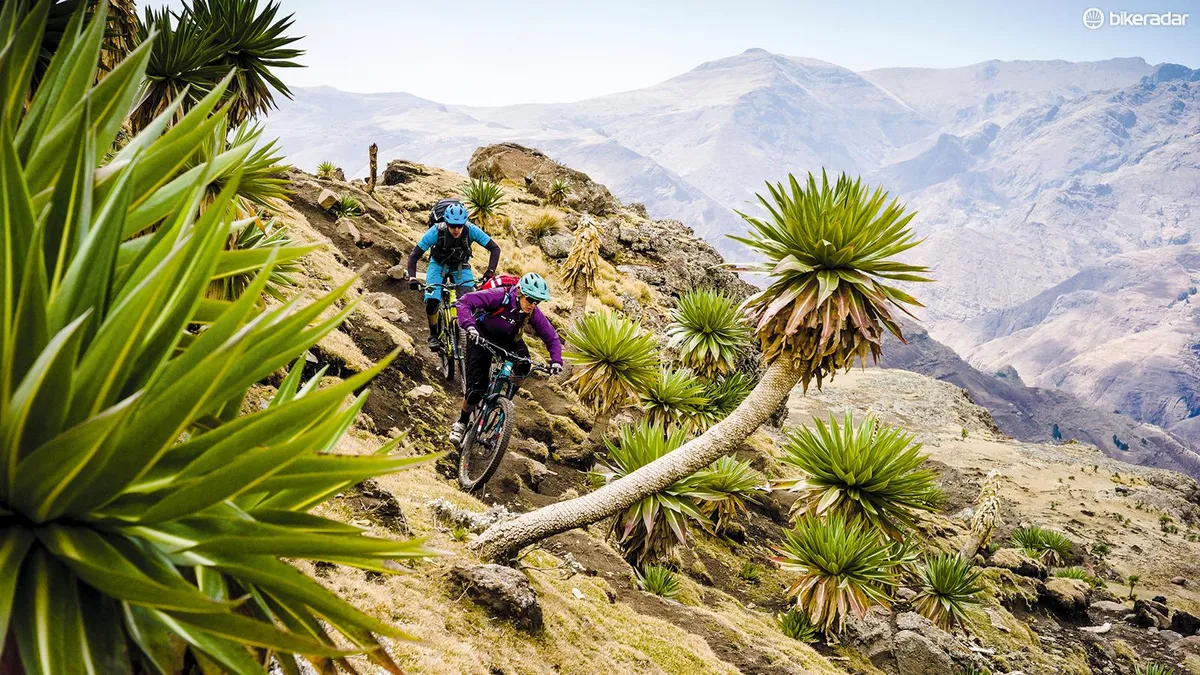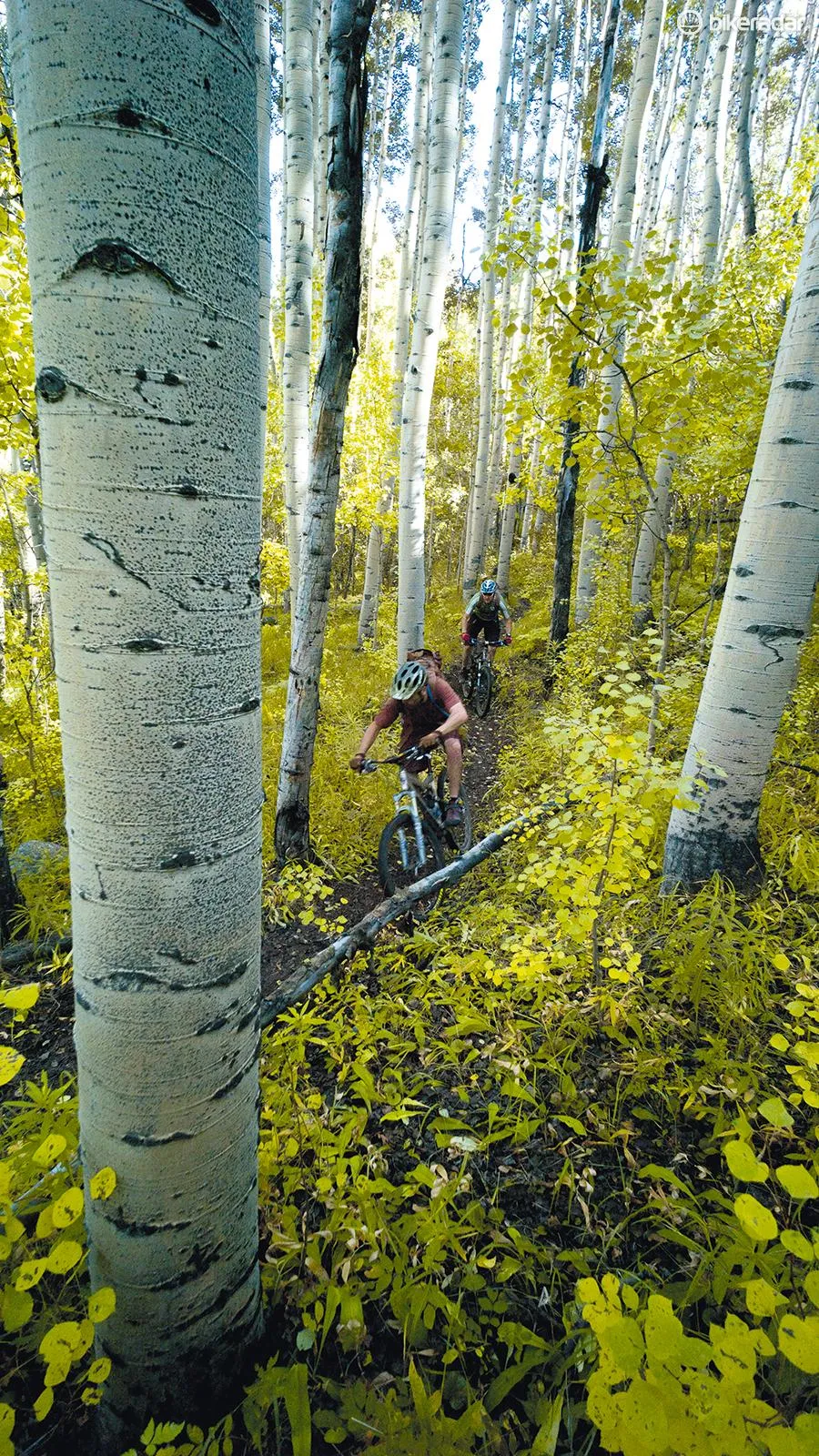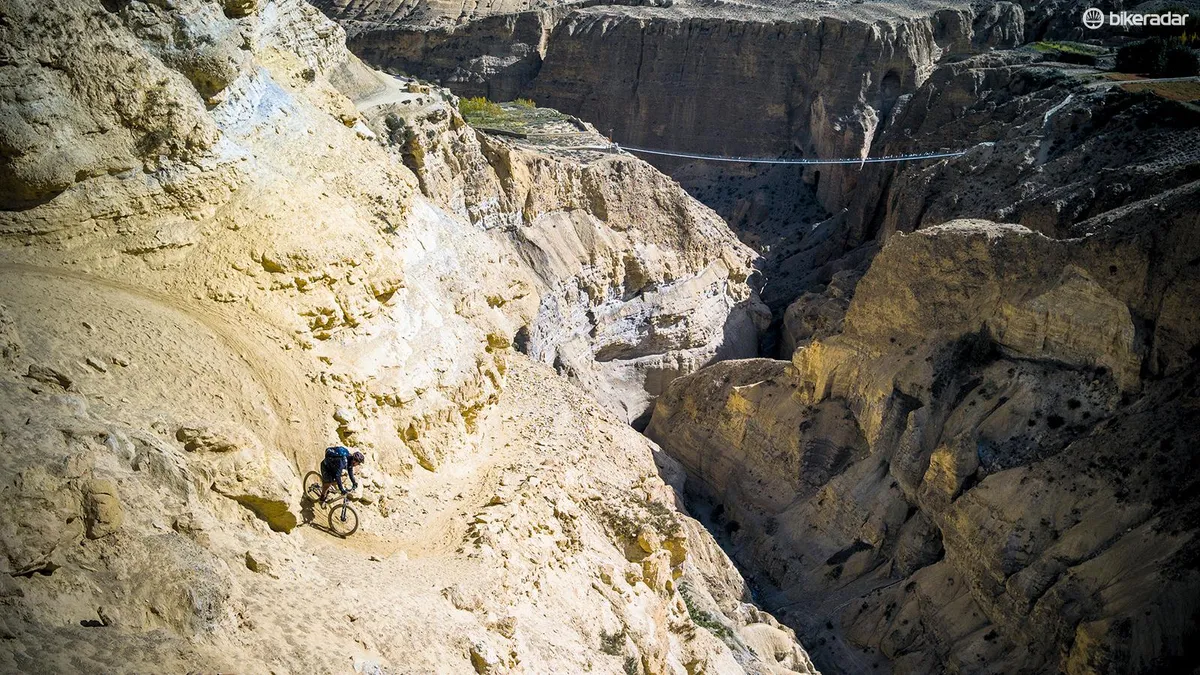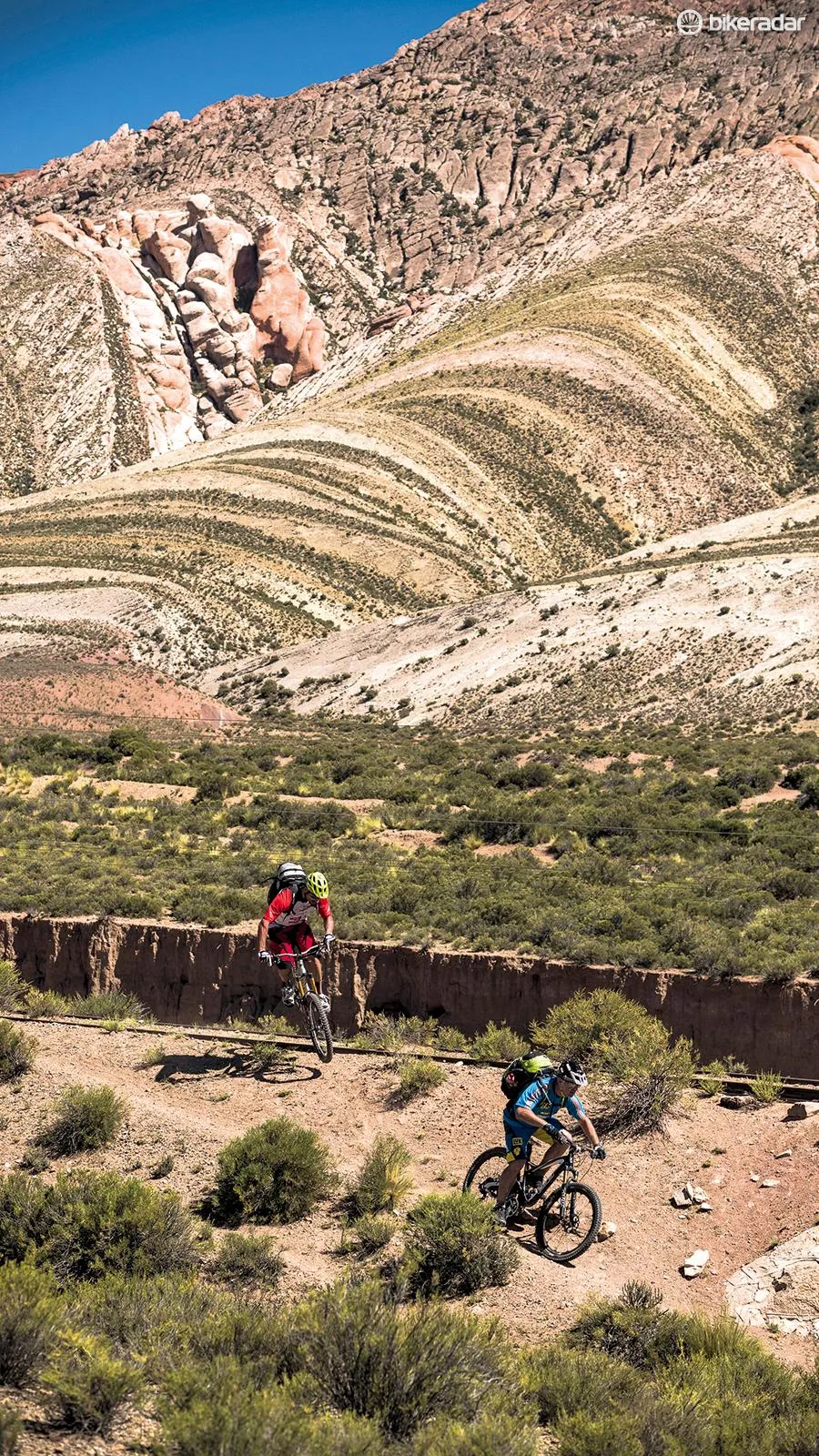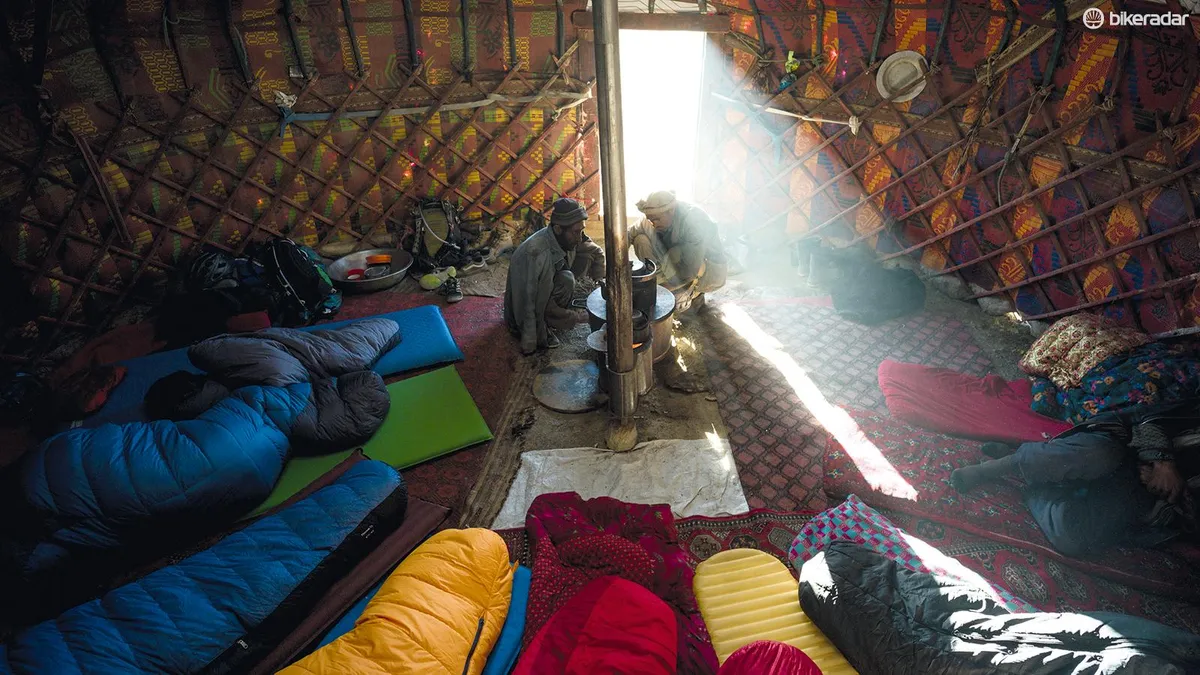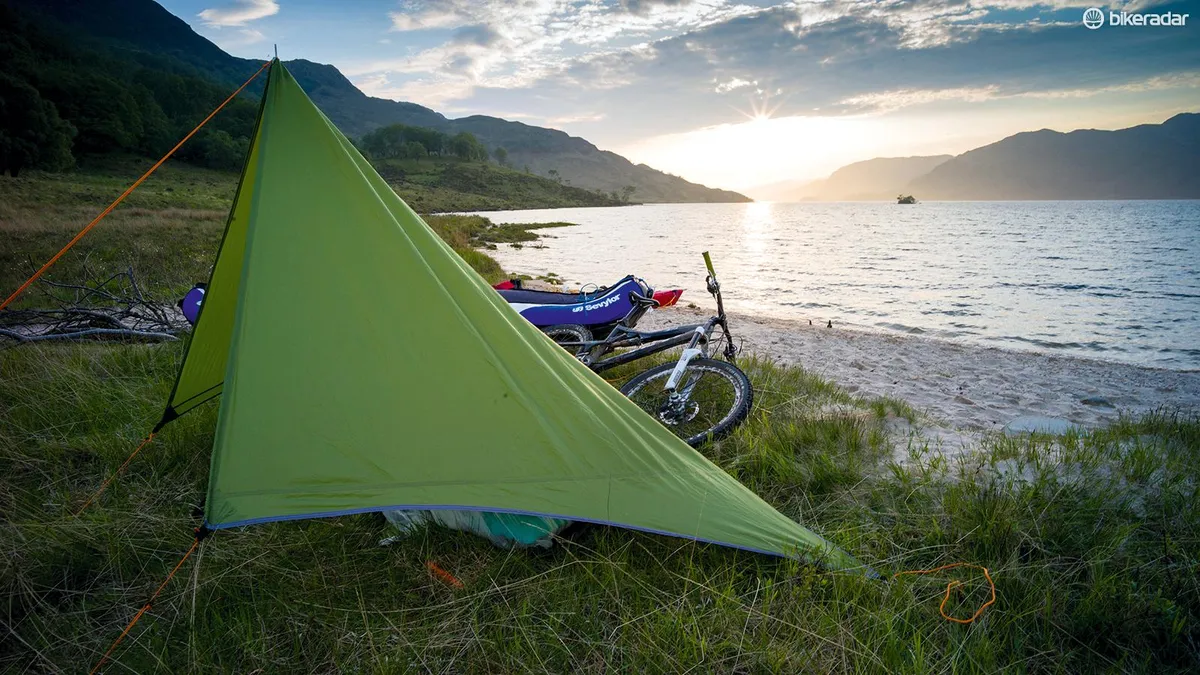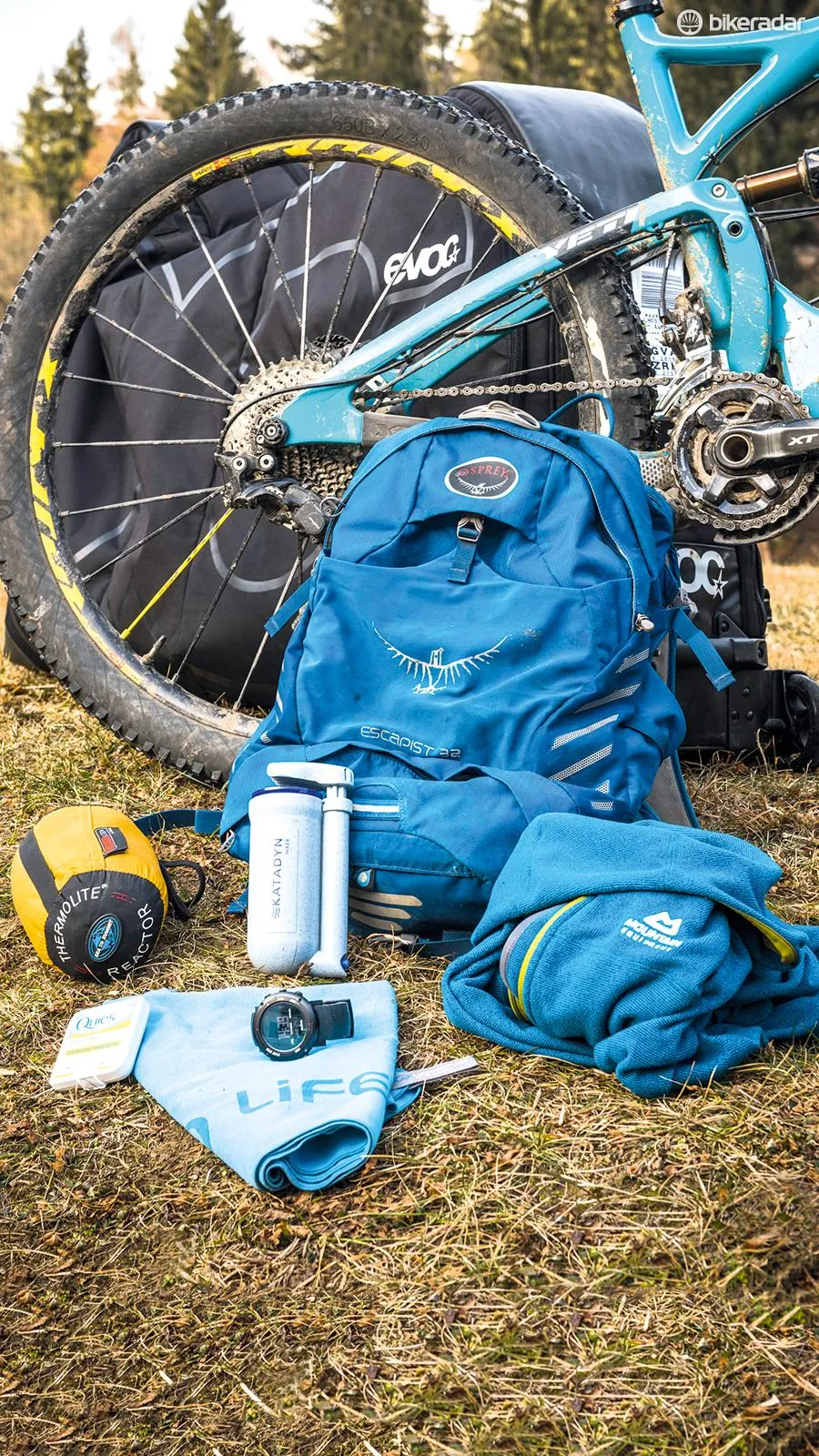In this article, photographer and adventurer Dan Milner reveals his most memorable rides, as well as his top 10 travel essentials.
- Are weird bikes, beards and suffering a compulsory part of bikepacking?
- Is this the ultimate saddle pack for bikepacking?
Best for coffee aficionados: Simien Mountains, Ethiopia
I haven’t drunk coffee for a decade but right now this seems as good a place as any to start. Ethiopia is after all, where the coffee plant originated.
I’ve just sweated my way up an impossibly steep climb, my bike slung across my back while the 3in thorns wielded by a hundred bushes added new ventilation holes to my jersey.
Needless to say the air around me echoed with expletives and I noticed that the rest of the seven-strong group of riders were keeping just out of earshot. Meanwhile a stooped old man, at least half my age again, romped up the steep, loose trail ahead like it was just a stroll to the corner shop.
I’m on day eight of a nine-day traverse of some very steep and rugged terrain, crossing one of Ethiopia’s gob-smackingly beautiful national parks: the Simien Mountains. This might be a guided trip, our needs and logistics ably taken care of by SecretCompass.com, but as with any multi-day ride at some point everyone snaps. And for me it came on day eight.
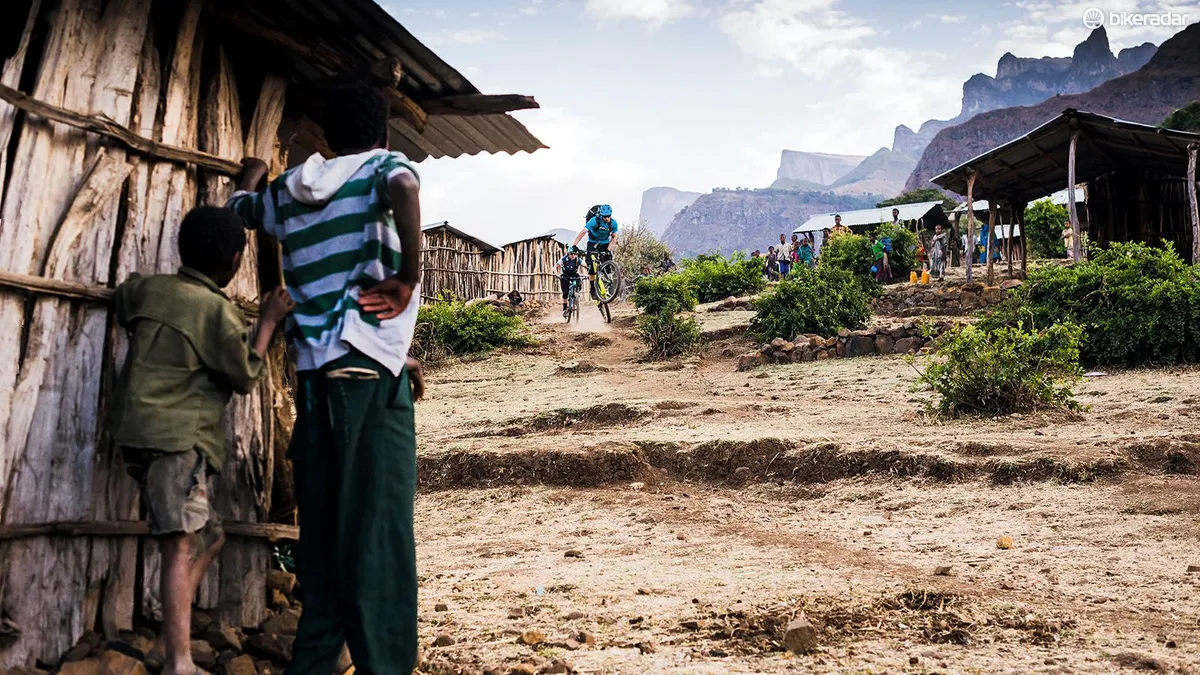
Behind us now were seven hard but good days of riding, book-ended by overnight camp-outs on village football pitches. On the trail technical rock gardens had added the adrenaline kick to fast, loose descent and throngs of kids had enlivened climbs, chasing us in a maelstrom of laughter and cheers. And we’d summitted Ethiopia’s highest peak, the 4,550m high Ras Dashen, grinding up a long fireroad to descend a wild singletrack that snaked between green lobelia trees.
But now I’m done. My back is soaked with sweat, my legs crumpling beneath me. Even the Simien’s rift valley landscape – perhaps the most stunning place I’ve ever been – cannot rescue my mind from wishing I was anywhere but here.

Adventure rides can do that. They build you up and they break you down. But then came the coffee, served by the same woman we’d watched first pan-toast the coffee beans over an open fire before grinding them and finally brewing the coffee. Her Muslim village is hell to reach and the shade of her mud-hut cafe hard earned, but now sinking back in a chair I take stock of my surroundings.
The old man that had set pace up the climb ahead of me is here and so are his pals. One picks up his mesenqo, a single-string lute, and starts to play, and in a minute the world seems at ease again. This little village hiding at the top of an impossibly steep climb has suddenly become heaven, or at least it is, if you don’t ask for a frothy cappuccino or low fat macchiato.
Best for controlling incontinence: Colorado Trail, USA
"It’s not the bears, but the mountain lions you needed to worry about,” says the National Park Ranger I speak to at the end of the trip. If he’d uttered these words pre-trip then things might have been different, but then maybe I wouldn’t now be so good at bladder control.
Six mates, one rental van and one Laavu – a modern, technical single-pole tipi – make for one hell of a trip, especially when you’re riding the Colorado Trail. The idea, to self-guide and self-support a multi-day ride on part of this high altitude, buff singletrack that runs half the length of Colorado, seemed like a good one on paper.
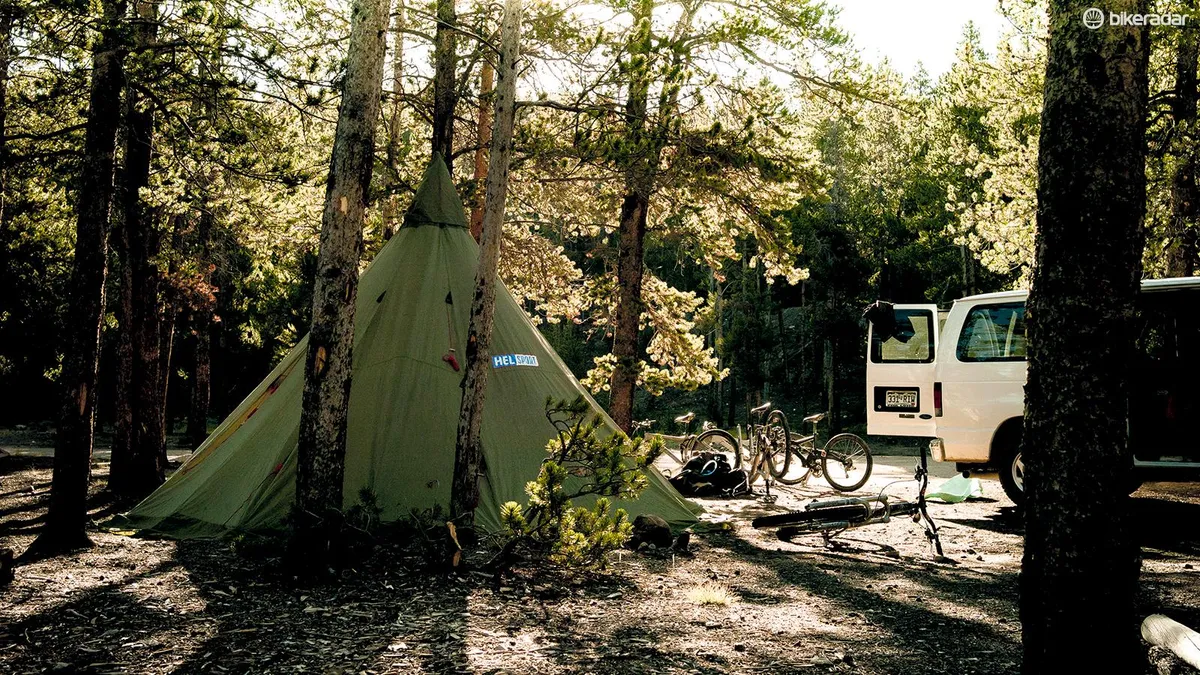
Easy to reach, beginning only a stone’s throw from Denver’s suburbs, and never too far from civilization, the Colorado Trail offers prime all-mountain riding for any mildly adventurous types. And with six of us along it meant we each had to take our turn in driving the support van for a day during our point-to-point six-day ride. In fact everything about this trip seemed simple, until we remembered the bears. Colorado is home to a lot of bears.
Lying in our group tent on the first night I try to overcome my jet-lagged desire to pee, holding on and trying to forget about the urge for what seems half the night. And then I can hold no more. I unzip my sleeping bag and suddenly a cacophony erupts around me.
All five of my fellow riders have naively been in the same predicament, none of us wanting to venture outside the gossamer-thin false security of the tent’s nylon wall into the bear-infested camp ground beyond to relieve ourselves. Realising everyone is awake, there’s a rush for the tent door and we circle the Laavu, the night air soon echoing with satisfactory sighs of relief and thankfully not a single growl from a bear.
Best for anxiety control: Loch Morar, Scotland
It’s only about half way across the cold and deep Loch Morar that Nick Bayliss and Taj Hendry fess up. Despite committing to a three-day sea kayak paddle around this Scottish loch in search of great riding trails, they’ve accrued only about a day’s worth of kayak experience between them.
And so begins an adventure, full of unknowns and challenges that belie its location, only an hour from the mountain bike Mecca of Fort William. I dip my hand into the clear water and realise that, despite it being late May, the water is icy-cold. I’m praying we don’t have any capsize rescues ahead.
But the cold water isn’t the biggest challenge we face, it’s the inflatable dinghies we’re towing. In a perverse and altruistic idea to show that adventure is less about exotic locations and more to do with a mindset, we’re hauling our bikes and overnight bivi gear on inflatables tethered behind three sea kayaks rented from the Arisaig Sea Kayak Centre.
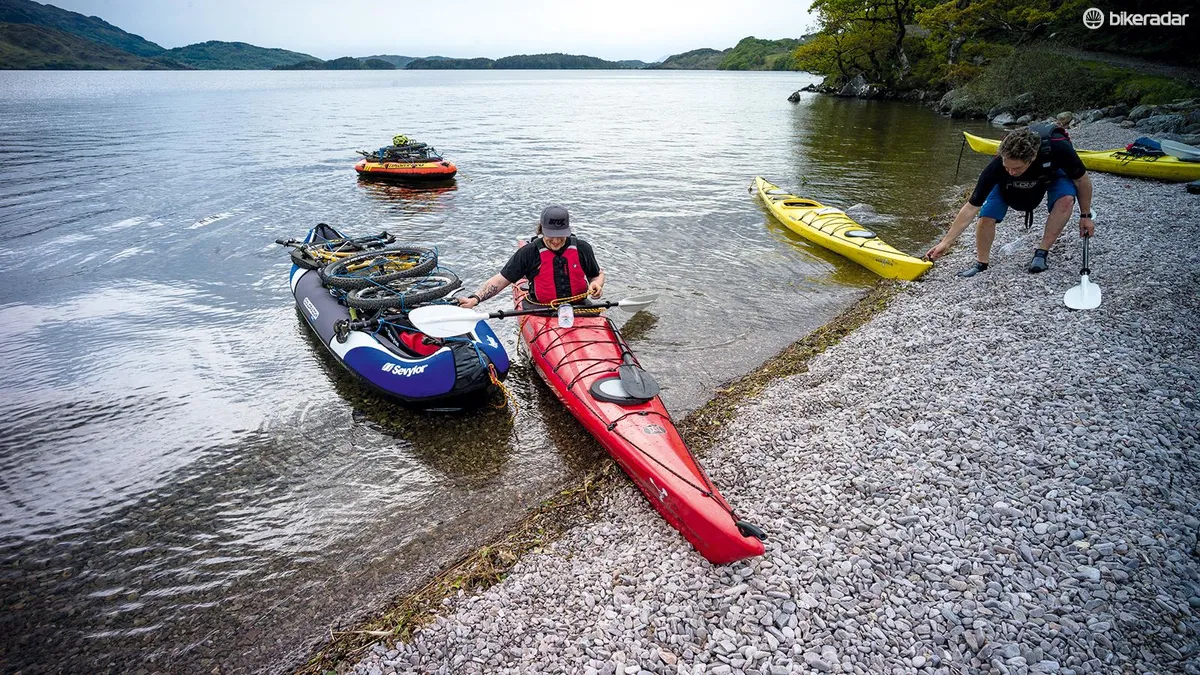
After a sturdy day’s paddle under clear skies we bivi on the north shore of the loch and set off to ride a beautiful singletrack next morning, our heads heavy from sampling some of Scotland’s best malt the night before.
Puffing our way up and down the rollercoaster ride blows away the cobwebs and sets us up for the kayak traverse of the loch to follow. But a second night’s bivouac under the stars on the southern shore, beers chilled in the gently lapping loch waters, makes us complacent for what’s to come.
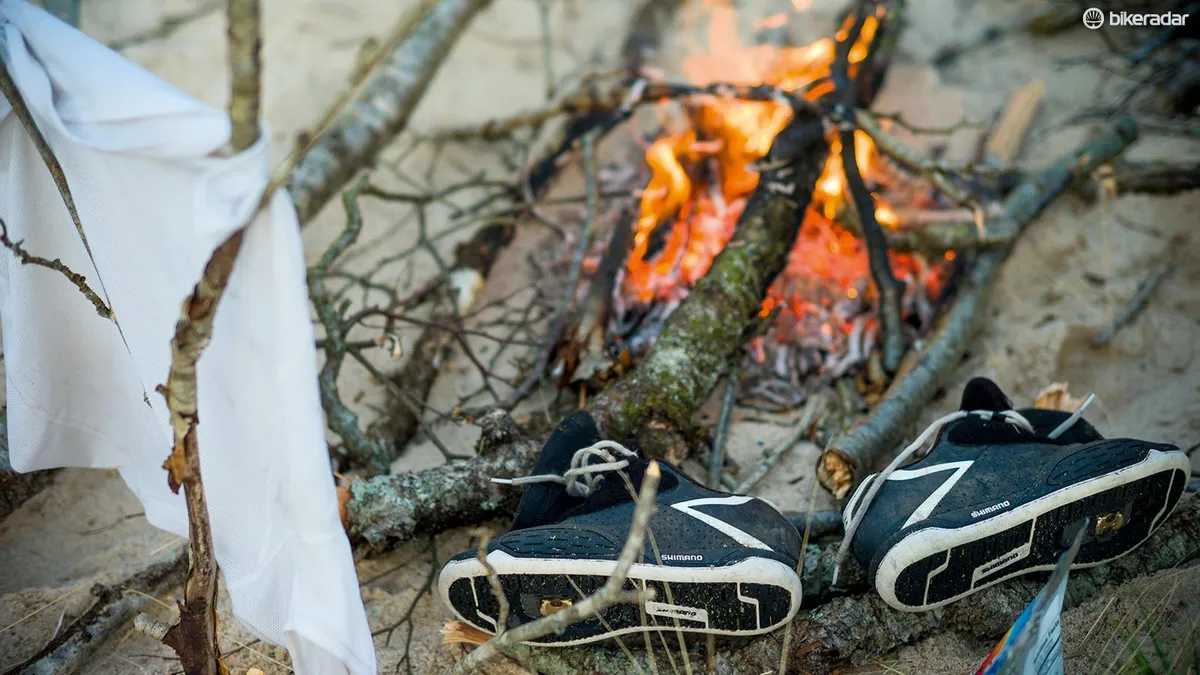
We wake to sheet rain and a howling wind that renders the seven-mile paddle home a real physical and mental challenge. Battling needling rain I gasp for breath as if I’m riding at 4,000m and pull harder on my paddle, aware of the inflatable sea anchor tethered behind me. In the murky distance ahead I can see my two fellow paddlers and I breathe a sigh of relief. Thankfully both are still upright.
Best for a Friday night out: Upper Mustang, Nepal
Sometimes it pays to learn your curry house menu. It might not make or break a night out in Bedford, but it could spell the difference between eating and going hungry in Nepal’s Upper Mustang region.
Our ageing host – a small Nepalese woman wielding a disproportionately large knife – can’t speak a word of English and my own Nepali is embarrassingly limited to ‘hello’ (namaste) and ‘thank you’ (danyabat). So we look at each other blankly. “She wants to know what to cook for us,” says Rob. American Rob Story has joined me and a Swedish mountain bike friend, Seb Liljeberg, to ride to a remote trail to the Tibetan border.
Our trail starts from the village of Kagbeni on the edge of Nepal’s tourism-popular Lower Mustang, and finishes at the ancient walled city of Lo Manthang 100km away. It’s five days there and five days back, through some wild mountains and over several 4,000m high passes, and almost all on singletrack.
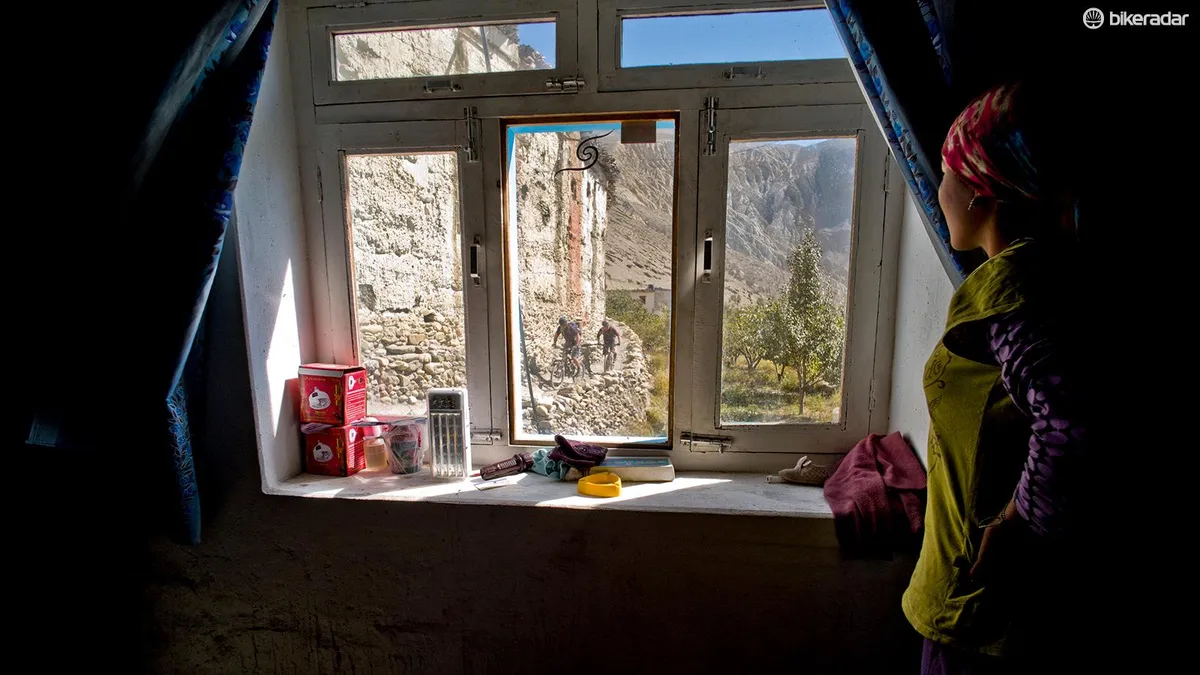
I’ve estimated our ride as a ten-day out-and-back because ten days is the time we have on our $500 permits to enter the restricted access Upper Mustang region. We have no idea what happens if we run late and little idea what the trail will throw at us.
The idea to ride this trail struck me a year earlier while riding in the Lower Mustang. I looked north from Kagbeni across a wild landscape that saw scant foreign visitors and even fewer mountain bikers (in fact we were the second group of westerners to ride here) and I was hooked.
A year later I used a Nepalese travel agency to organise our permits in Kathmandu and I found our porters in Pokhara, before jumping aboard a 20-seater plane to Jomsom, the windy gateway to the Annapurna massif.
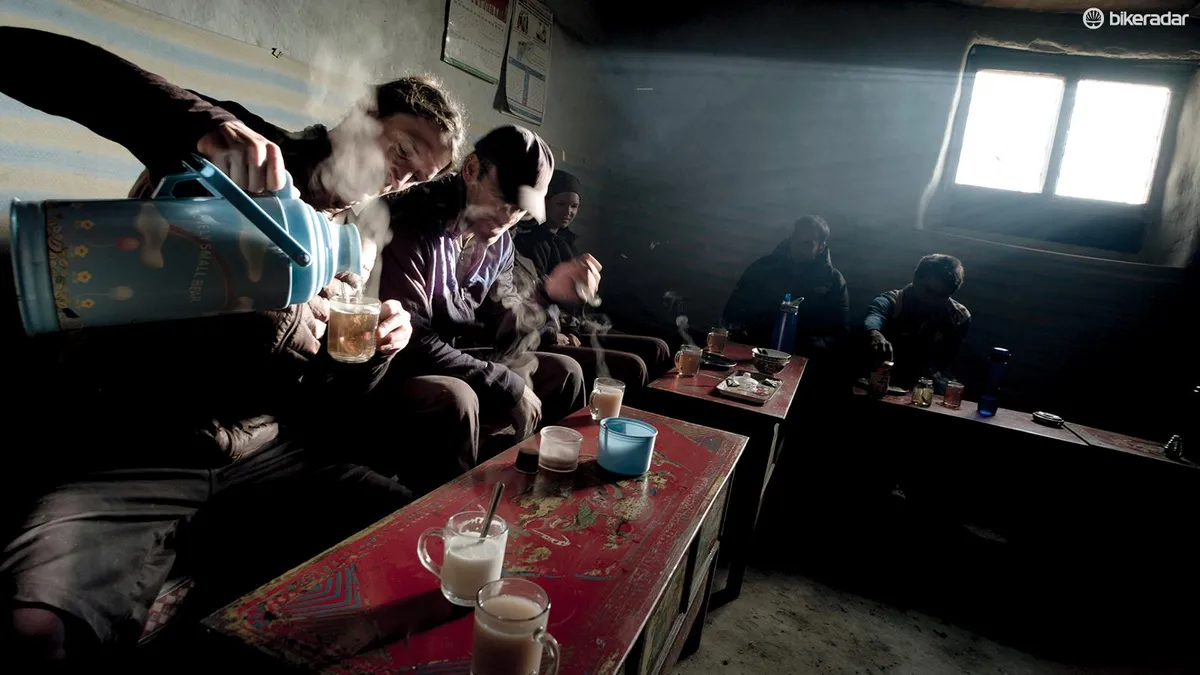
And now, leapfrogging our three $15-per-day porters, we have reached a teahouse without them and can’t communicate with our host. And then I remember seeing cauliflowers in the vegetable patch outside. “Aloo gobi?” I ask, following up with “chana masala? Aloo matar?”
I reel off a curry house menu like it’s just another Friday night out and instantly our host’s weathered face lights up to the amazement of my two non-Brit co-adventurers. Dinner is on, washed down with several bottles of Everest beer. The Cobra can wait.
Best for overcoming vertigo: Jujuy, Argentina
I look down at the 20m drop below me and try to regain control of my legs that have begun a seriously risky adrenaline shake. I’m not one for heights so what the heck am I doing stepping between the old wooden sleepers of a railway bridge above a deep gorge in Argentina?
For me the mountain bike is the perfect excuse for travel, combining all those travel-flavoured experiences with the endorphin-rich rewards of flowing trails. It’s a ticket to adventure, or at least that was my reasoning when I came up with the idea to ride a 100km length of an old disused railway in northern Argentina.
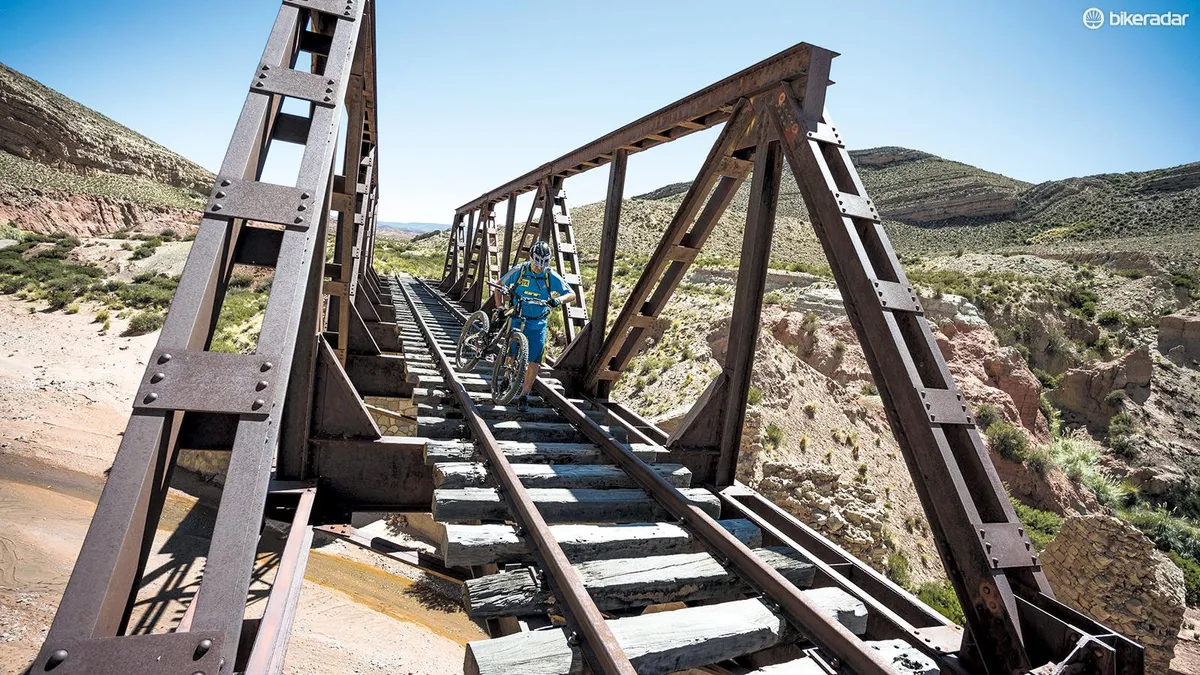
“Sometimes to find an adventure’s rewards you have to think outside the box but inside the lines,” I explained. But not everyone shared my enthusiasm. “It’s the shittiest, most f**ked up trail I have ever seen,” said Hans Rey as we got off the bus that had paralleled the last 30km of the railway we were going to ride.
Hans had committed to coming with Tibor Simai and myself and the last five-hour bus ride had given us the first sight of the ‘trail’ we’d be following for three days. It looked quite different in the flesh from how I’d pictured it after studying its path on Google Earth.
Starting at the Bolivian border we were to follow this 100-year-old railway line, using it as a conduit to adventure and who knows what other travel-related experiences along the way. Knowing the railway hadn’t seen any maintenance for 25 years meant there would be challenges ahead, like two enormous, gorge-spanning iron bridges.
I tiptoe across, knowing that like the headwind and the 3,200m lung-busting altitude, this bridge merely provides another exercise in self-learning. Like any adventure, this one’s challenges became opportunities to develop new skills. After all, who’d have thought a bike trip might give me a career headstart in tight rope walking?
Best for al fresco bathing: Wakhan Corridor, Afghanistan
“The river’s too high to cross,” says Tom, our guide and the organiser of our 12-day traverse of Afghanistan’s remote Wakhan Corridor. The river that blocks our way is a churning torrent of risk and I need little persuasion to wait for the next morning when the overnight freeze will reduce the flow.
Although our ride through this peaceful corner of a war-torn country crosses three 4,800m passes, it’s the rivers not these high passes that are our biggest challenge. Summer melt of permanent snowfields have swollen these rivers to levels that take real commitment to wade into, both for us and the chain of pack animals that are carrying our expedition gear.
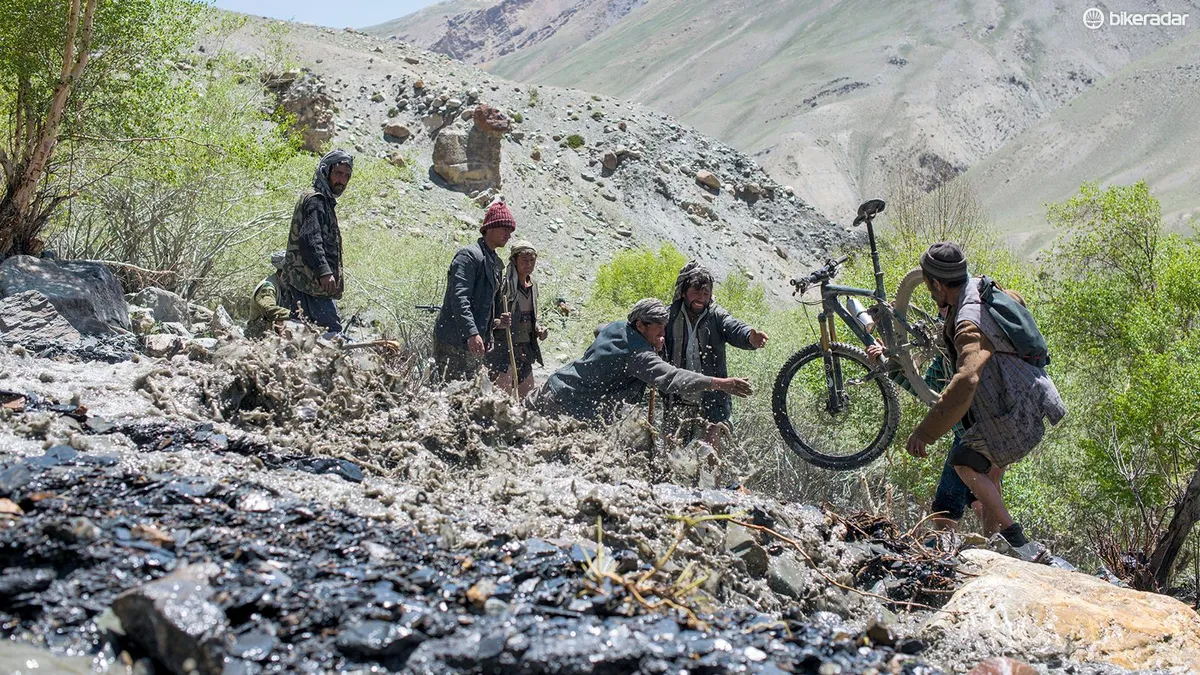
In this land populated by semi nomadic shepherds there are no shops. Instead everything for our group of six westerners, and our Afghan support team of translator, cook and animal handlers, must be carried with us – food, cooking supplies, tents and sleeping bags. It’s probably the most remote place I’ve ever been and one of the last true corners of wilderness on the planet. Merely to reach our ride’s start point takes us four days to drive overland from neighbouring Tajikistan.
But the many rivers that lie in our path have an upside: in these mountains we are never far from a bath. And that’s not a bad thing considering the regular ten-hour days of riding and pushing bikes we’re experiencing. The dust, sweat and 30-degree heat of some days gives way to long, grinding hikes across boggy ground, followed by being enveloped in the thick acrid smoke of yak-dung-fuelled cooking fires. All of this is giving our crew a certain ‘expedition’ odour.
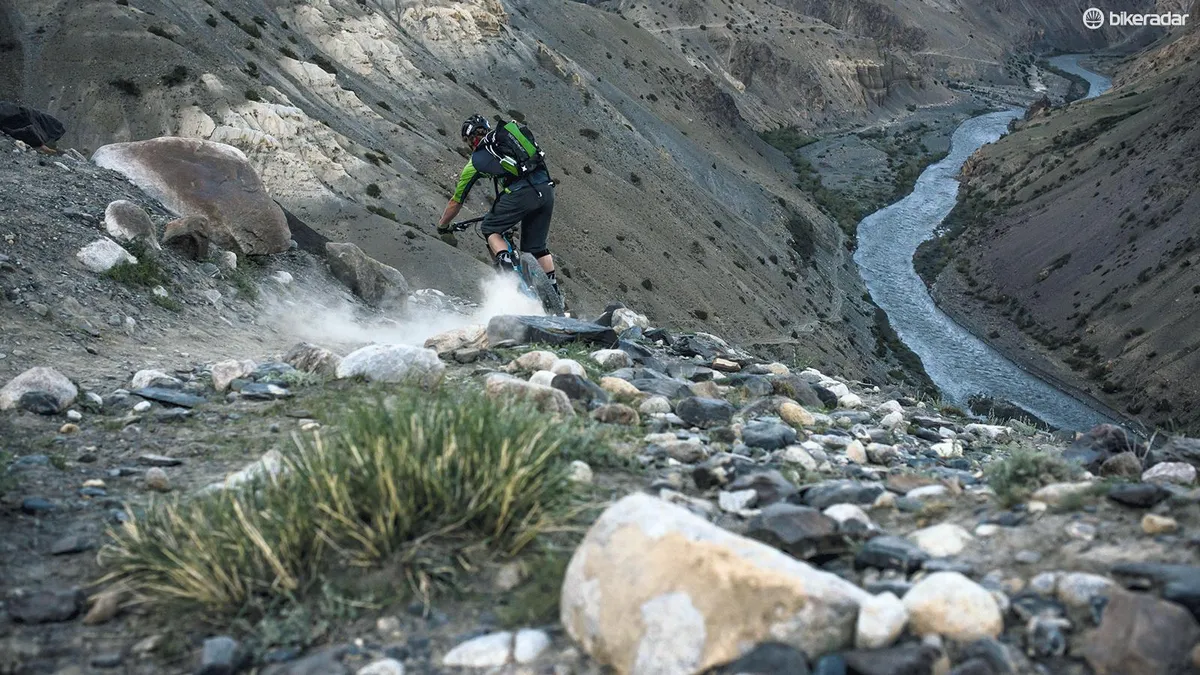
But like crossing the rivers, bathing in their cold waters demands some mettle, too. When I lower my grubby body into a swirl of glacial-blue water that instantly robs any feeling from my extremities, my mind is simmering with the countless experiences that this trip is delivering. We might be a long way from a hot tub, but then where else can you share a bath with a yak?
Dan’s tips for finding adventure
Adventure comes in all shapes and sizes, so how best to find and survive it?
Think laterally: The best adventures aren’t necessarily the furthest flung: even a traverse of your local hills can be made into a decent adventure if you throw in an overnight bivouac halfway through.
Prepare for the unexpected: Adventure is all about the unknowns ahead, so a bit of mental prep can make the difference between getting through it or becoming that moaning whinger no-one wants to ride with. Of course, it helps to start easy and build up from there.
Think guided: Bike guiding companies have done their homework so you don’t have to. Yes they may cost a bit, but they can deliver all the flavours of adventure without the hassle factor or anxieties that a DIY self?guided trip often brings. Don’t snub the guided option – it might be your entrance ticket to new riding experiences whether it’s in Scotland or India.
Dan’s 10 travel essentials
1. Shimano XT Drivetrain: Reliable and lightweight, my Shimano XT set-up has seen me through countless demanding expeditions without complaint. www.madison.co.uk
2. Mavic CrossMax XL Wheels: Light, strong, stiff and easy to set up tubeless. Mine even stood up to a shoe’ing from a horse in Afghanistan. Enough said. www.mavic.com
3. Katadyn Water Filter: Fill up from any tap anywhere and still dodge Delhi belly, meaning more time on the bike and less on the toilet. www.katadyn.com
4. Diablo Hooded Fleece: Light enough to ride in without overheating with a hood to maximise post-ride warmth makes this my one go-to layer. www.mountainequipment.co.uk
5. Osprey Escapist 32L Backpack: Comfortable when fully loaded it throws heavyweight punches at a bantamweight and packs all the tech features you want on and off the bike. www.ospreyeurope.com
6. Wax ear plugs: Lose those barking dogs and snoring tent mates to a world of peace. From your local chemist.
7. EVOC Bike Bag: Small enough to squeeze into the back of a Nepalese taxi but tough enough to keep your pride and joy unscathed through a dozen airports. www.silverfish-uk.com
8. Sleeping bag liner: Not every hotel bed is exactly what you’re hoping for, so a lightweight, minimalist liner can be your comfort blanket. www.seatosummit.com
9. Lifeventure Pack Towel: This lightweight quick-drying towel turns any river into a potential bath. www.madison.co.uk
10. Core Altimeter Watch: Knowing what to expect on the ascent ahead can help pace a ride, and the data log can give you endless pub-bore kudos afterwards. www.suunto.com
